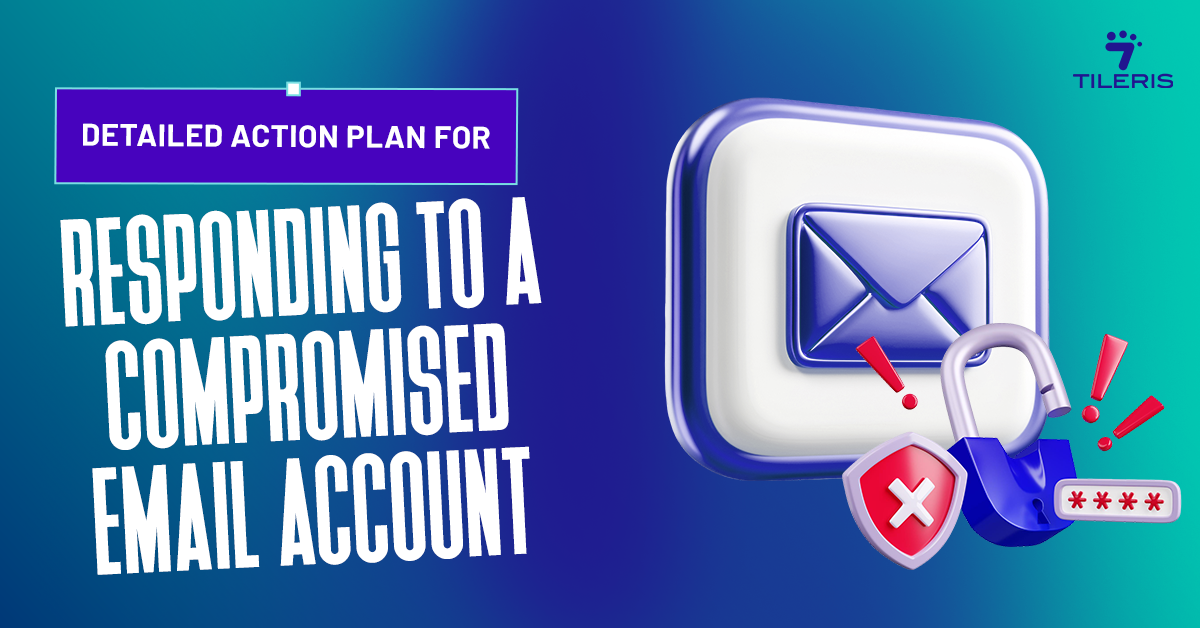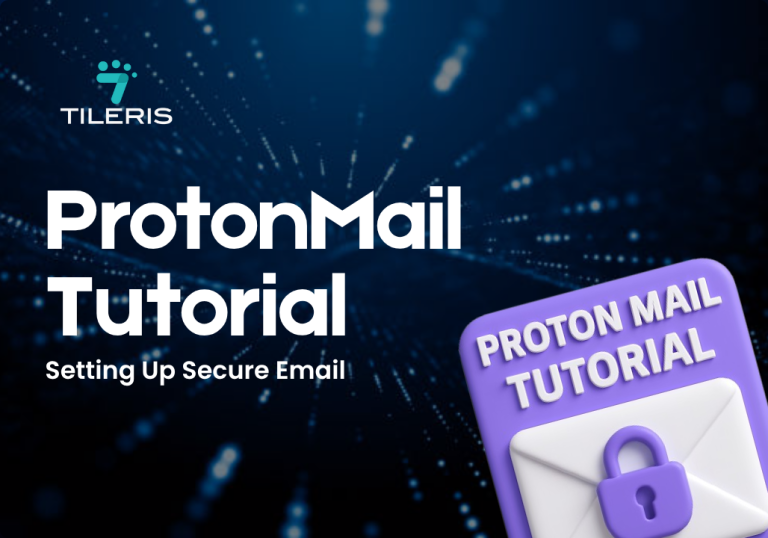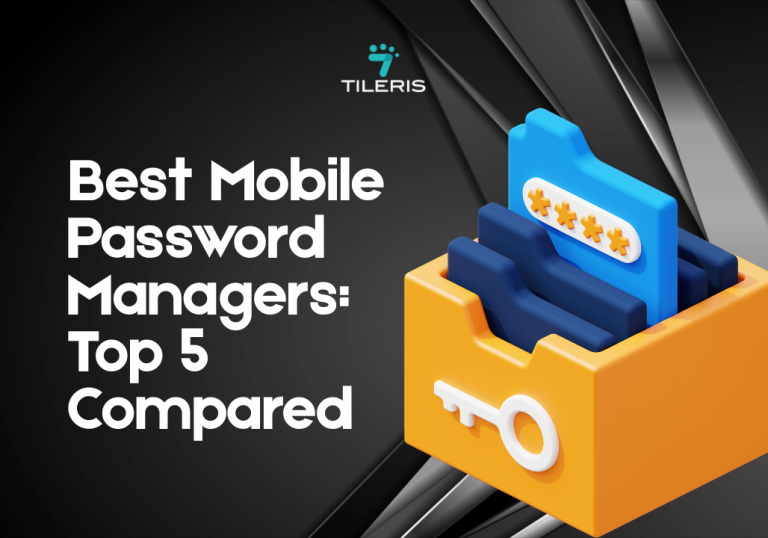Detailed Action Plan For Responding to a Compromised Email Account
Introduction
Your email isn’t just where you get cat memes and online shopping receipts, it’s often the master key to your entire digital life. It’s connected to your bank, social media, online stores, and even your professional identity. So, imagine the panic when that master key falls into the wrong hands. A compromised email account isn’t just an inconvenience, it’s a serious security breach that can lead to devastating consequences, from financial fraud to identity theft. The good news is, having a clear, detailed action plan can make all the difference. This article will walk you through a detailed action plan for responding to a compromised email account.
Identifying a Compromised Email Account: The Warning Signs
Sometimes, you might not even realize your email has been breached until something feels off. Here are the common red flags that signals a compromised email account:
- Unusual Login Activity: Did you get an alert from your email provider about a login from a strange location (say, L.A. when you’re in Minnesota), or at an odd time (like 3 AM when you were asleep)? This is a huge warning sign.
- Suspicious Emails Sent from Your Account: Have friends or colleagues called or texted you asking about weird emails they received from you that you never sent? Or do you see strange messages in your “Sent” folder that aren’t yours? This is a strong indicator that someone else is using your account.
- Changes to Account Settings or Forwarding Rules: Check your email settings. Has your profile picture changed? Are there new forwarding rules set up that send your emails to an unknown address? Has your signature or recovery phone number/email been altered? These are classic signs of an intruder.
- You Can’t Log In: The most obvious sign is that your password no longer works, even though you’re sure it’s correct.
Immediate Action To Take After finding About a Compromised Email Account.
The moment you suspect your email is compromised, drop everything and take these steps immediately. Seriously, every second counts.
- Change the Password and Enable Two-Factor Authentication (2FA):
- Attempt to change your password immediately. If you can still log in, go to your email provider’s security settings and create a new, strong, and unique password.
- If you can’t log in, use the “Forgot Password” or “Account Recovery” option. Follow the steps to regain access.
- Crucially, enable Two-Factor Authentication (2FA) or Multi-Factor Authentication (MFA) right away if it’s not already on. This requires a second verification step (like a code from your phone) even if someone has your password. This is your best defense!
- Notify Contacts and Friends About the Incident:
- As soon as you’ve regained some control (or even if you haven’t), use an alternative, secure method (like a text message, phone call, or a secondary email account you know is safe) to warn your close contacts. Tell them your email was compromised and that they should ignore or delete any suspicious emails they receive from your address. This prevents the attacker from tricking your contacts.
- Consider a public post on a trusted social media platform (like your Facebook or WhatsApp Status) if you use them, to alert a wider circle.
- Report the Incident to the Email Provider:
- Every major email provider (Google, Microsoft, Yahoo, etc.) has a dedicated process for reporting compromised accounts. Look for their “security,” “help,” or “report abuse” sections. Provide them with all the details you have. They might be able to trace suspicious activity and help with full recovery.
Notifying Relevant Institutions
The impact of a compromised email account can ripple outwards. You need to alert others who might be affected.
- Financial Institutions and Credit Card Companies:
- If you found any evidence of financial access or fraud (or even if you didn’t, but financial emails were present), contact your bank, credit card companies, and any mobile money providers immediately. Explain the situation and ask them to monitor your accounts for suspicious activity. Consider cancelling and reissuing cards if necessary.
- Online Services and Accounts Linked to the Email Account:
- Go through your list of potentially affected online services. For each one, log in (using your newly secured email and a new password) and change the password there. Prioritize those holding sensitive data or financial information.
- Law Enforcement and Regulatory Authorities (if necessary):
- Internet Crime Complaint Center (IC3): While U.S.-based, if your compromise has international elements or targets U.S. services, filing a report with the FBI’s IC3 can be useful for intelligence gathering.
- Financial Regulators: If significant financial fraud occurred, you may need to escalate to financial regulators after notifying your bank.
Assess the Damage: What Did They Get To?
Once you’ve taken immediate steps to secure your email, it’s time for a detective’s work to understand the extent of the breach.
- Identifying Sensitive Information Accessed or Stolen:
- Go through your email folders (Inbox, Sent, Drafts, Archives). Did your email contain sensitive documents, passwords, bank statements, photos of your SSN, or other personal details?
- Think about what accounts use this email for login or password resets. This is crucial for the next step.
- Determining the Extent of the Compromise:
- Check your email’s “Sent” folder again. How many suspicious emails were sent? Who were they sent to?
- Review your email’s login activity logs (most providers show this). Where and when did unauthorized logins occur?
- Identifying Potential Security Risks:
- Based on what you found, list out all online services potentially affected. This could include online banking, e-commerce sites(Amazon), social media (Facebook, Instagram), cloud storage (Google Drive, OneDrive), and any professional platforms.
Securing Your Compromised Email Account
Now that you’ve assessed the damage, it’s time to batten down the hatches and prevent future intrusions into this specific email account.
- Updating Security Settings and Software:
- Deep Dive into Email Settings: Go through all your email account’s security and privacy settings. Ensure no new recovery emails or phone numbers were added by the attacker. Check any strange filters or forwarding rules that might have been set up to divert your mail.
- Scan Your Devices: Run a full, deep scan with your reputable antivirus/anti-malware software on all devices (computer, phone, tablet) you use to access this email. The compromise might have started with malware on your device.
- Update Everything: Make sure your operating system (Windows, macOS, Android, iOS), web browser, and all other applications are fully updated. These updates often include critical security patches.
- Enabling Additional Security Features (e.g., Login Alerts, Account Monitoring):
- Turn on any “login alerts” or “activity notifications” offered by your email provider. This way, you’ll be instantly notified if someone tries to log in from an unfamiliar device or location.
- Consider using monitoring tools that track your identity across the web (often offered by financial institutions or identity theft protection services).
- Reviewing and Updating Account Settings and Forwarding Rules:
- This is critical! Attackers often set up forwarding rules to silently send copies of your incoming emails to their accounts, even after you’ve changed your password. Delete any forwarding rules you didn’t create.
- Remove any unfamiliar “connected apps” or “third-party access” from your email account’s settings.
Preventing Future Compromises
A compromise is a tough lesson, but it’s an opportunity to build stronger digital habits.
- Using Strong and Unique Passwords: This cannot be stressed enough. Never, ever reuse passwords. Use a password manager to effortlessly generate and store complex passwords.
- Being Cautious with Email Attachments and Links: Adopt a “verify before you click” mindset. Phishing attempts are getting incredibly sophisticated. If an email seems off, even from someone you know, confirm it through another channel (like a phone call) before interacting with links or attachments.
- Regularly Updating Software and Security Patches: Ensure your devices’ operating systems and all your applications are set to update automatically. These updates frequently include crucial security fixes that block new ways attackers might try to get in.
- Be Wary of Public Wi-Fi: If you use public Wi-Fi, always use a reputable Virtual Private Network (VPN) to encrypt your connection.
Conclusion
Having a compromised email account feels like a violation, a breach of your digital sanctuary. But panicking won’t help. Instead, having a detailed, step-by-step action plan is your most powerful tool for regaining control and mitigating damage. From those critical immediate steps to reporting to authorities and fortifying your defenses, each action builds towards reclaiming your security.
This experience should serve as a wake-up call to prioritize your email security like never before. Embrace strong passwords, enable two-factor authentication (2FA), be vigilant against scams, and keep your software updated. By taking these proactive measures, you’re not just recovering from one attack; you’re building a resilient digital fortress, making it much harder for cybercriminals to compromise your inbox ever again.
To learn more about email security, or get help protecting your email account, visit us at tileris.com.







